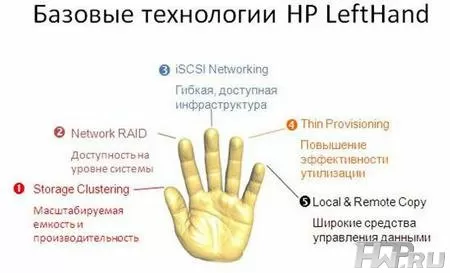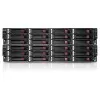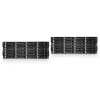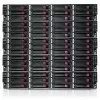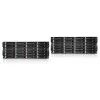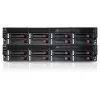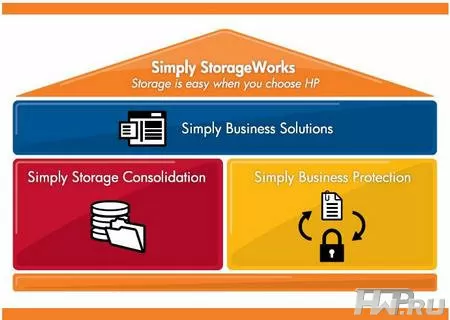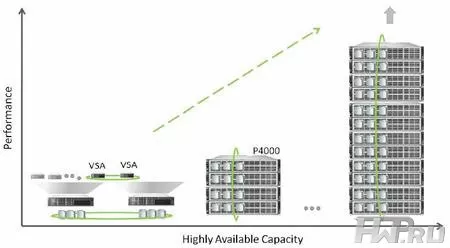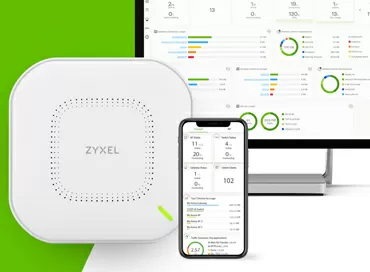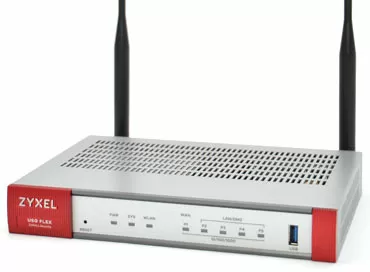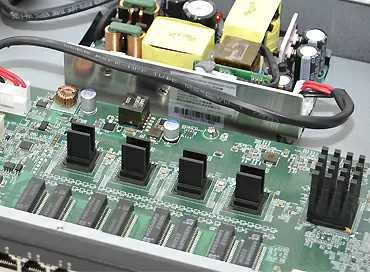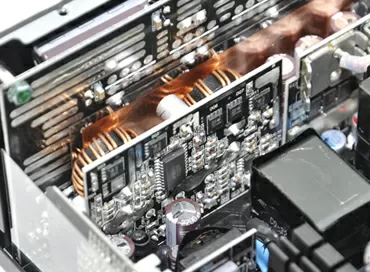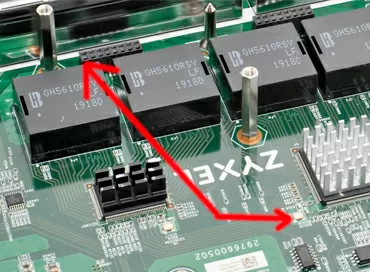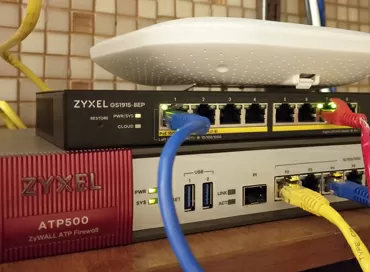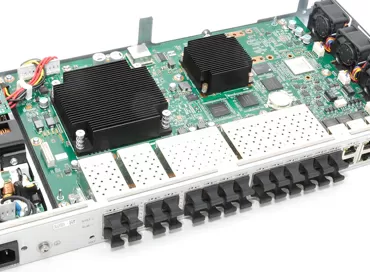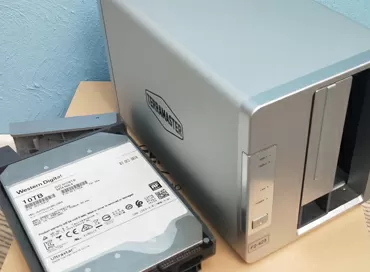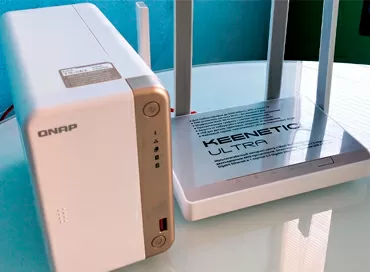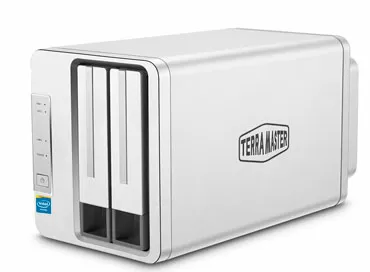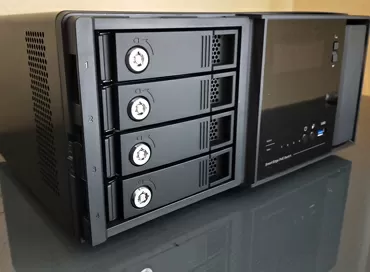Benefits of Second Generation HP LeftHand P4000 SAN Storage
Statistics are tough lady, difficult to argue with. And she says the amount of information stored on the Internet doubles every 18 months. At enterprises, the situation is not fundamentally better - wherever you look, everywhere you look, there are papers that have their own electronic copy, electronic document circulation, which is gaining momentum every year. In a word, even a small firm cannot do without a storage of information (preferably large and reliable). So you need to approach the issue of storage systems (data storage systems) as responsibly as possible, especially since the choice of systems becomes wider over time.
Small companies can use special file servers to store data, or create their own file server using the hp proliant dl360 server as a platform, hp proliant server dl380 or hp dl580 g5 , inexpensive solutions that are optimal for the given task. But if your company has tens of terabytes of data, and tasks belong to the mission critical class, then you need more serious storage systems . In this article, we'll take a look at HP LeftHand P4000 SAN storage and see what a powerful server player like Hewlett Packard has to offer.
The essence of the HP Lefthand concept
Title & quot; Lefthand & quot; clearly not invented casual. In the picture below, you can understand what the concept of the HP Lefthand is based on.
As you can see from the picture, HP Lefthand relies on 5 core technologies: Storage Clustering, Network RAID, iSCSI Networking, Thin Provisioning, Local & amp; Remote Copy. The names speak for themselves. In this article we will find confirmation of each of these points.
Lineup
| HP StorageWorks P4500 G2 10.8 TB SAS (AX696A) | HP StorageWorks P4500 G2 21.6 TB SAS (AX697A) | HP StorageWorks P4500 G2 60 TB MDL SAS (BK717A) | |
| Number of discs | 24; Enabled | 48; Enabled | 60; Enabled |
| Storage capacity | 10.8 TB; Enabled | 21.6 TB; Enabled | 60 TB; Enabled |
| Upgradeability | P4500 G2 5.4TB SAS AX700A NAS | P4500 G2 10.8TB AX696A NAS | P4500 G2 NAS 12TB MDL SAS AX703A |
| Array Interface | 1 GB iSCSI; Optional upgrade to 10GB iSCSI (CX4) | ||
| Accessibility Features | Hot-plug redundant power supplies; backup fans; hot-pluggable redundant hard drives, integrated storage controller with DDR2 persistent cache, hardware RAID levels 5, 6, and 10, clustered hyper-redundant storage, and network-based RAID levels (per volume) 0,5,6,10,10 +1 and 10 + 2 with the ability to create up to 4 copies of data ensure data availability in the event of disk, controller, storage node, power, network or server failures | ||
| Control Functions | Centralized Management Console, HP ProLiant Integrated Lights-Out 2 Remote Management System, Controller for IPMI 2.0 Core Board Management | ||
| Compatible Operating Systems | Microsoft Windows Server 2003 R2 - all versions; Microsoft Windows Server 2008 - all versions; Microsoft Windows Server 2008 R2 - all versions; VMware ESX/ESXi 3.5; VMware vSphere ESX/ESXi Server 4; VMware Site Recovery Manager; Red Hat Enterprise Linux AS 4.6/4.7/4.8; Red Hat Enterprise Linux 5.0/5.1/5.2/5.3/5.4; Novell NetWare 6.5; SUSE Linux Enterprise Server 9/10/10.1/10.2/11; Fedora 6/8/9/10/11; Solaris 10; HP-UX 11i v1 (11.11)/v2 (11.23)/v3 (11.31); IBM AIX 5L/6.1; Citrix XenServer 5.0/5.5; Apple OS X 10.5/10.6 | ||
| Clustering support | Yes; Super redundant clustered storage | ||
| Thin provisioning support | SAN/iQ Thin Provisioning | ||
| Snapshot support | Application Integrated SAN/iQ Snapshots | ||
| Smart clone support | SAN/iQ SmartClone | ||
| Unpacked size (W x D x H) | 7.52 x 44.80 x 71.71 cm | 35.04 x 44.80 x 71.71 cm | 43.8 x 44.80 x 71.71 cm |
| Weight without packaging | 40.82 kg | 81.64 kg | 102.05 kg |
| Warranty (parts - build quality - on-site support) | 3/3/3 | ||
| Package content | Two redundant controllers in active-active state, 24 SAS hard drives with a capacity of 450 GB and 15,000 RPM spindle speed (24 per node), 8 GB RAM, redundant hot-plug power supplies, redundant fans, 1024 MB power independent cache, 4 1 GB network adapters, onboard DVD/CD-ROM drive | Two redundant controllers in active-active state, 48 SAS hard disks with a capacity of 450 GB and a spindle speed of 15000 RPM (24 per node), 16 GB RAM, redundant hot-plug power supplies, redundant fans, 2048 MB standalone cache, 8 1 GB network adapters (4 per node) and an onboard DVD drive/CD-ROM | Two redundant controllers in active-active state, 60 MDL SAS hard disks with 1000 GB capacity and 7200 RPM spindle speed, 20 GB RAM, redundant hot-plug power supplies; redundant fans, 2560 MB power independent cache, 10 1 GB network adapters, built-in DVD/CD-ROM drive |
| HP StorageWorks P4300 G2 7.2TB SAS (BK716A) | HP StorageWorks P4300 G2 16TB MDL SAS (BK715A) | |
| Number of discs | 16; Enabled | 16; Enabled |
| Storage capacity | 7.2 TB; Enabled | 16 TB; Enabled |
| Upgradeability | NAS P4300 G2 3.6TB SASBK718A | P4300 G2 NAS 8TB MDL SASBK719A |
| Array Interface | 1 GB iSCSI; Optional upgrade to 10GB iSCSI (CX4) | |
| Accessibility Features | Hot-plug redundant power supplies; backup fans; hot-pluggable redundant hard drives, integrated storage controller with DDR2 persistent cache, hardware RAID levels 5, 6, and 10, clustered hyper-redundant storage, and network-based RAID levels (per volume) 0,5,6,10,10 +1 and 10 + 2 with the ability to create up to 4 copies of data ensure data availability in the event of disk, controller, storage node, power, network or server failures | |
| Control Functions | Centralized Management Console, HP ProLiant Integrated Lights-Out 2 Remote Management System, Controller for IPMI 2.0 Core Board Management | |
| Compatible Operating Systems | Microsoft Windows Server 2003 R2 - all versions; Microsoft Windows Server 2008 - all versions; Microsoft Windows Server 2008 R2 - all versions; VMware ESX/ESXi 3.5; VMware vSphere ESX/ESXi Server 4; VMware Site Recovery Manager; Red Hat Enterprise Linux AS 4.6/4.7/4.8; Red Hat Enterprise Linux 5.0/5.1/5.2/5.3/5.4; Novell NetWare 6.5; SUSE Linux Enterprise Server 9/10/10.1/10.2/11; Fedora 6/8/9/10/11; Solaris 10; HP-UX 11i v1 (11.11)/v2 (11.23)/v3 (11.31); IBM AIX 5L/6.1; Citrix XenServer 5.0/5.5; Apple OS X 10.5/10.6 | |
| Clustering support | Yes; Super redundant clustered storage | |
| Thin provisioning support | SAN/iQ Thin Provisioning | |
| Snapshot support | Application Integrated SAN/iQ Snapshots | |
| Smart clone support | SAN/iQ SmartClone | |
| Unpacked size (W x D x H) | 17.52 x 44.80 x 71.71 cm | |
| Weight without packaging | 36.29 kg | 36.29 kg |
| Warranty (parts - build quality - on-site support) | 3/3/3 | |
| Package content | Two redundant storage controllers in active-active state, 16 SAS hard drives with 450 GB 15,000 RPM, 8 GB RAM, hot-swappable redundant power supplies, redundant fans, 1024 MB power independent cache, 4 1 GB network adapters, built-in DVD/CD drive ROM | Two redundant controllers in active-active state, 16 MDL SAS hard disks with a capacity of 1000 GB and a spindle speed of 7200 rpm , 12 GB RAM, hot-swap redundant power supplies, redundant fans, 1024 MB power independent cache, 4 1 GB network adapters, built-in DVD/CD-ROM drive. |
As you can see from the table, the key differences are in the number of hard drives, their capacity and speed. So, the smallest HP StorageWorks P4300 G2 7.2TB SAS (BK716A) comes with 16 450GB SAS hard drives and 15,000 RPM spindle speed. And the most & quot; big & quot; the model named HP StorageWorks P4500 G2 60 TB MDL SAS (BK717A) comes with 60 1000 GB MDL SAS hard drives and 7200 rpm spindle speed. Also, the volumes of installed RAM and the number of gigabit network adapters are different - on the models mentioned above, 8GB of RAM and 4 adapters, 20GB of RAM and 10 adapters (respectively) are installed.
The following key features of the HP Lefthand P4000 SAN solutions can be noted.
Functionality of enterprise-grade storage systems at an affordable price. Thanks to cluster technologies (individual nodes, coupled with the linking software), several birds with one stone are killed: nodes can be located in different geographical locations, and cluster software combines them into a single system with a common pool for disk space, distributing the load in an optimal way. It makes the most of both the performance and capacity of the HP LeftHand P4000 SAN. Increasing volume requirements can be met by introducing new nodes.
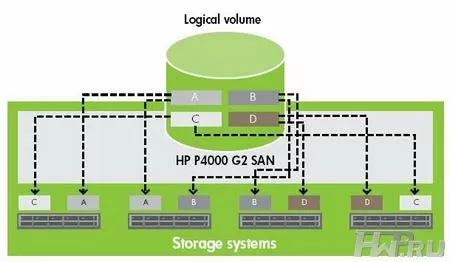
High availability provided by Network RAID technology. No user will feel the failure of a disk, controller or even the entire module - HP LeftHand P4000 SAN storage systems perform synchronous replication by allocating blocks data and checksums for different cluster nodes. Failover procedures, data synchronization, and LUN migration between cluster nodes are seamless for users.

Thin Provisioning technology allows you not to worry that tomorrow you will need more volume than is allocated today. The HP LeftHand P4000 SAN Storage System allocates disk space as needed while data is being written. This eliminates the need to reserve capacity when creating LUNs, and therefore utilizes hardware more efficiently. You don't have to buy a bunch of hard drives at once, but acquire them gradually, as needed.
Snapshots simplify data protection. So called "snapshots" (exact copies of all information on a logical volume), allowing the system to be restored in the event of a failure, can be obtained directly while the business applications are running on the source disk (that is, right when the data itself changes). Unlike traditional arrays, which have to reserve capacity to create snapshots, HP LeftHand P4000 SAN technologies can use disk space more efficiently by copying links, not the data itself, and without limiting the number of snapshots. You can create copies of LUNs not only in manual mode, but also according to a schedule or as a result of scripts. For Microsoft Windows users, integration with the Volume Snapshot Service and VSS backup software is provided.
Remote replication will allow avoiding not only information loss (due to backup) but also application downtime (due to users switching to a backup site without data loss). If there is unimportant information that is not required to replicate, then you can save on capacity due to the difference in the volumes of the main and backup data centers (which may not coincide due to the fact that replication is carried out at the level of logical volumes). And since only changed data is copied, the bandwidth requirements for the HP LeftHand P4000 SAN can be reduced. Replication is configured and managed using a simple graphical interface, and the integrity of the copies is guaranteed through the use of "snapshots" for copying data on the source system.

Finally, the main bargaining chip in the sleeve is the HP P4000 LeftHand Virtual SAN Appliance is software that integrates any VMware ESX-based server into a single clustered storage system. enabling VMware HA, VMotion, DRS, and SRM features with minimal hardware investment. VMware internal disk virtualization eliminates the need for expensive external Fiber Channel arrays, making it ideal for small business datacenters or remote offices. The P4000 VSA software is certified for compatibility with VMware products in the virtual storage category.
HP P4000 LeftHand Virtual SAN Appliance is endowed with everything you need: user-friendly and intuitive interface, simplicity of initial setup, performing complex operations in a matter of mouse clicks (for example, setting up replication).
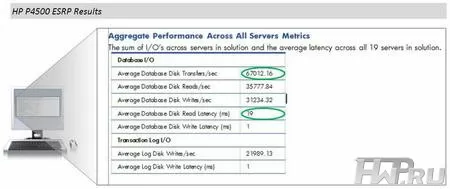
It would seem that there are so many merits, except for lack of high performance. But the HP LeftHand P4000 SAN also has this. Benchmarks show decent read/write speeds and latencies.
An important issue is price. Cost of Ownership calculated from many factors. The first is the purchase price. Let's give an estimated cost of solutions: HP StorageWorks P4300 G2 7.2 TB SAS (BK716A) - $ 35 thousand , HP StorageWorks P4500 G2 10.8 TB SAS (AX696A) - $ 90 thousand HP StorageWorks P4500 G2 21.6 TB SAS - $ 145K
Of course, so powerful Small businesses are unlikely to be interested in solutions (the `` scope '' is not the same), but the feasibility for medium and large enterprises becomes immediately obvious - the flexibility of the system allows you to solve several problems at once. First, you can increase the amount of file space as needed. Secondly, thanks to cluster technologies, the load is distributed among all nodes, which eliminates equipment downtime. Thirdly, due to the use of replication, duplicated connections, RAID and clustering, high fault tolerance and disaster recovery are provided.
So, going from "shallow" figures (purchase cost, maintenance) to losses and lost profits, which could be a result of equipment downtime, or downtime of the enterprise itself as a result of the failure of a part of the storage system, i.e. Anything that the HP LeftHand P4000 SAN can help avoid, the total cost of ownership will be very tempting.
These and many other advantages (big and small) make the HP LeftHand P4000 SAN a very successful solution in the field of data storage.
Additional information
Hewlett Packard has always been famous for both warranty and post-warranty service. In addition to the mandatory 3-year parts and labor warranty and 3-year onsite support, additional services are available for a fee.
Recommended services:
- HP Support Plus 24: Support Plus 24 provides 24/7 support to reduce system recovery times and facilitate more complex hardware and software interoperability issues. HP Care Packs for this type of service are offered for 3, 4 or 5 years. In this case, the cost of support will be lower than in the case of annual contract renewals.
- Installation and Startup: the procedures required to quickly install and commission HP LeftHand P4000 SAN storage systems.
- HP Proactive 24 Service Pack combines comprehensive preventative and reactive hardware and software support services to help you resolve a problem quickly or prevent it from occurring.
- HP Proactive Select , 30 credits per year: Personal Support Manager and 30 Proactive Service Credits per year, which can be redeemed for various HP Services.
Lutovinov Maxim Mikhailovich
18 /05.2010

